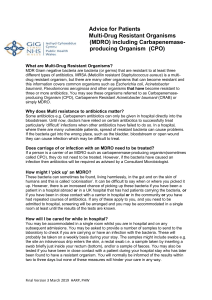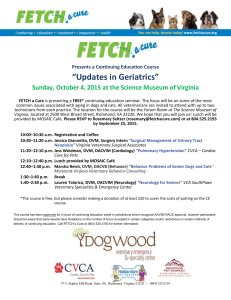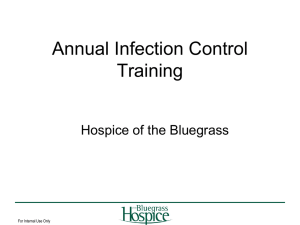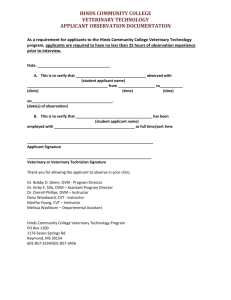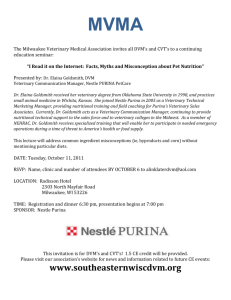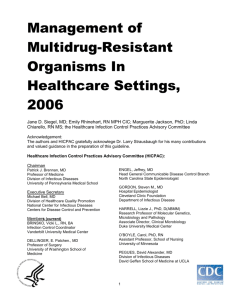Preventing and Responding to Multiple Drug
advertisement
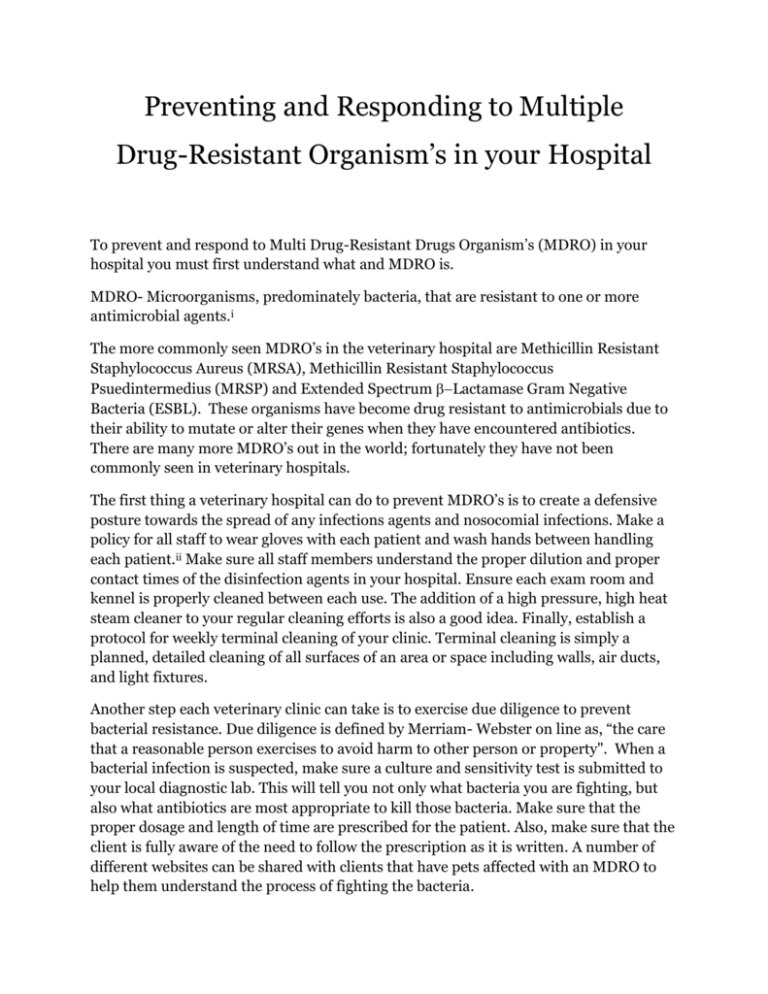
Preventing and Responding to Multiple Drug-Resistant Organism’s in your Hospital To prevent and respond to Multi Drug-Resistant Drugs Organism’s (MDRO) in your hospital you must first understand what and MDRO is. MDRO- Microorganisms, predominately bacteria, that are resistant to one or more antimicrobial agents.i The more commonly seen MDRO’s in the veterinary hospital are Methicillin Resistant Staphylococcus Aureus (MRSA), Methicillin Resistant Staphylococcus Psuedintermedius (MRSP) and Extended Spectrum Lactamase Gram Negative Bacteria (ESBL). These organisms have become drug resistant to antimicrobials due to their ability to mutate or alter their genes when they have encountered antibiotics. There are many more MDRO’s out in the world; fortunately they have not been commonly seen in veterinary hospitals. The first thing a veterinary hospital can do to prevent MDRO’s is to create a defensive posture towards the spread of any infections agents and nosocomial infections. Make a policy for all staff to wear gloves with each patient and wash hands between handling each patient.ii Make sure all staff members understand the proper dilution and proper contact times of the disinfection agents in your hospital. Ensure each exam room and kennel is properly cleaned between each use. The addition of a high pressure, high heat steam cleaner to your regular cleaning efforts is also a good idea. Finally, establish a protocol for weekly terminal cleaning of your clinic. Terminal cleaning is simply a planned, detailed cleaning of all surfaces of an area or space including walls, air ducts, and light fixtures. Another step each veterinary clinic can take is to exercise due diligence to prevent bacterial resistance. Due diligence is defined by Merriam- Webster on line as, “the care that a reasonable person exercises to avoid harm to other person or property". When a bacterial infection is suspected, make sure a culture and sensitivity test is submitted to your local diagnostic lab. This will tell you not only what bacteria you are fighting, but also what antibiotics are most appropriate to kill those bacteria. Make sure that the proper dosage and length of time are prescribed for the patient. Also, make sure that the client is fully aware of the need to follow the prescription as it is written. A number of different websites can be shared with clients that have pets affected with an MDRO to help them understand the process of fighting the bacteria. Have a plan in place for handling patients with a confirmed MDROiii. Personal protection equipment (PPE) should be available for all staff dealing with these patients. PPE should include fluid resistant gowns, gloves, caps or buffounts, masks, eye protection and shoe covers. During treatment of these patients make sure enough staff is available to have a “clean person”. In other words each person in direct contact with the patient should be wearing PPE, but have one “clean” person that can get needed items from drawers and cabinets if needed. Each patient should be kept in some type of isolation area for MDRO’s. Once the patient has been treated or discharge, the areas the patient has been in should be terminally cleaned with an appropriate disinfectant. MDRO’s are here to stay. In fact, it is likely that more bacteria will become drug resistant in the future. Knowing how respond to this likely hood is the best way to protect your staff, patients and clinic. i L. Cavney, B. Jones and K. Ellis, Veterinary infection: Prevention and Control : Wiley-Blackwell 2012 . Portner, DVM, DACVECC, J. Johnson, DVM, DACVECC, Compendium: Continuing Education for Veterinarians, May 2010 iii J. Portner, DVM, DACVECC, J. Johnson, DVM, DACVECC, Compendium: Continuing Education for Veterinarians, May 2010 ii
